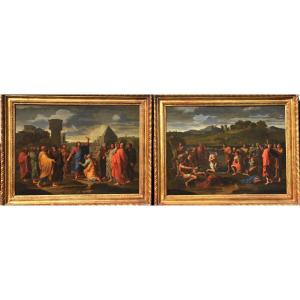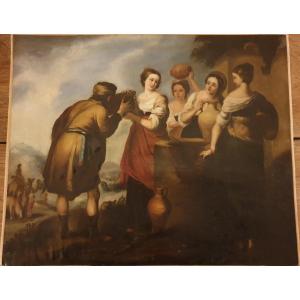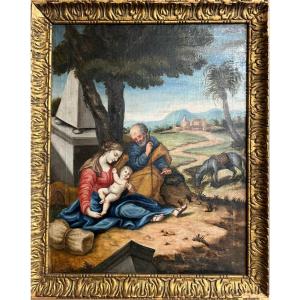The mourning of Christ
Olio on panel
in 18,70x25,79
The panel can be attributed to a sixteenth-century artist active along the Adriatic axis. The earlier attribution, related to the very first Venetian activity of Doménikos Theotokópoulos, known as El Greco (Candia, 1541; Toledo, 1614), originated in the 1950s when the term "madonnero" for this specific genre was promoted by Rodolfo Pallucchini. Pallucchini, discussing the youth of Tintoretto, asserted that: "in Venice, there is no longer any doubt that for a few years, El Greco worked as a madonnero." From this point, a misattribution of the artist's early production emerged. However, Pallucchini was not alone; many other scholars attributed works to "El Greco madonnero," including notable names like Giuseppe Fiocco, Sergio Bettini, Roberto Longhi, and Antonio Morassi. It was only in the 1960s, through the interventions of Arslan, that the phenomenon was naturally reassessed.
It was, in fact, the dominance of the Republic of Venice that gave rise to the Cretan Renaissance, facilitating a fruitful encounter between the two artistic traditions. This cultural exchange also led to shifts in the island's social structure, fueled by commerce and the emergence of a merchant bourgeoisie increasingly aligned with Venetian culture, while the Venetian population, in turn, absorbed and harmonized these distinguished traditions.
This new pictorial conception spread thanks to masters who traveled along maritime routes, disseminating an illustrative style that was far from insular. Prints, icons, and precious canvases from the East and West formed the foundation of extraordinary creations and the phenomenon of Doménikos Theotokópoulos, an artist capable of renewing the examples set by Titian, Jacopo Bassano, Andrea Schiavone, and Polidoro da Lanciano, thus envisioning true formal revolutions. In this context, innovation centered on the use of color—glossy in the Byzantine manner yet tonal and iridescent following the Venetian tradition, achieving, in some cases, exceptionally high-quality results. This judgment applies to the panel in question, whose aesthetic value is clearly far from that typically reached by madonnari, evident in the refined execution and the precious quality of the color.
Dimensions
in 18,70x25,79
Provenance
Private collection
Bibliography
Pallucchini Rodolfo, La giovinezza del Tintoretto, Milano, Daria Guarnati, 1950, p. 58.
Panayotis K. Ioannou, El Greco tra i “Madonneri”: la critica, le ideologie, il mercato. Nuove luci sul recupero del Trittico di Modena (1937), Studi di storia dell’arte, vol. 27, 2017, pp. 151-174, note 68-76.
Arslan Edoardo, Cronistoria del Greco “madonnero”, in Commentari, XV, De Luca Editore, Roma, 1964, 3-4, pp. 213-231.
Conditions
Shortages and defects. Breakages. Restorations.
































 Le Magazine de PROANTIC
Le Magazine de PROANTIC TRÉSORS Magazine
TRÉSORS Magazine Rivista Artiquariato
Rivista Artiquariato